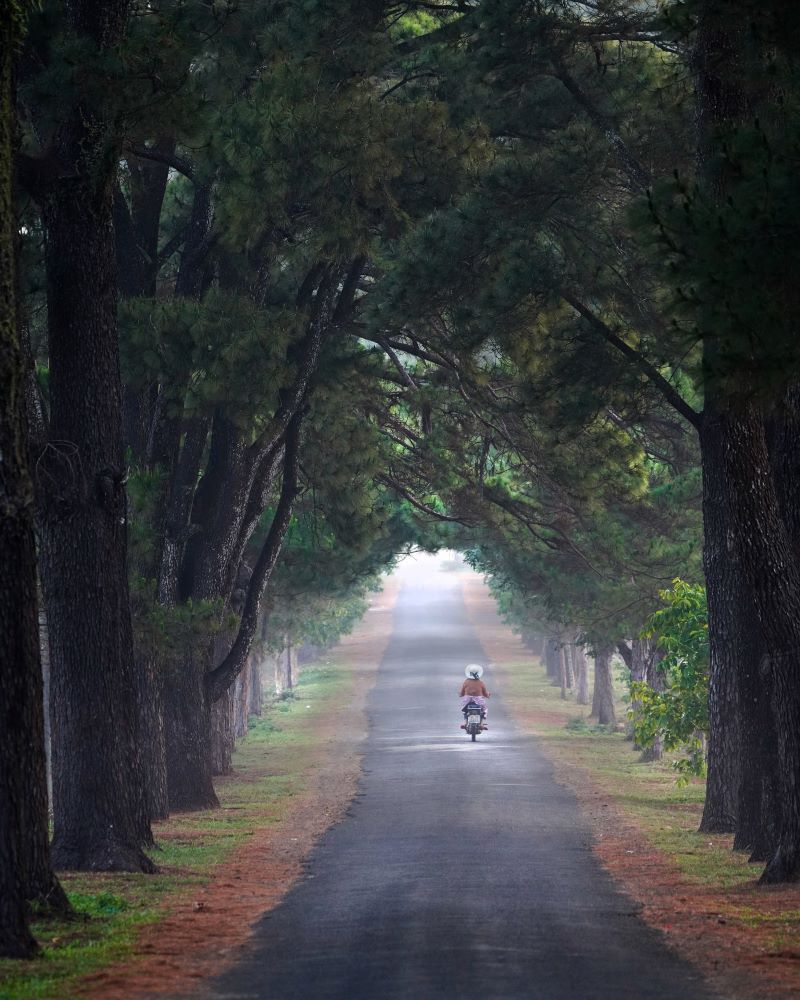
Lensman Tran Tuan Viet's images of Vietnamese daily life and scenic landscapes have been featured by U.S. magazine National Geographic.
Lensman Tran Tuan Viet’s images of Vietnamese daily life and scenic landscapes have been featured by U.S. magazine National Geographic.
 |
|
A woman drives along a road lined by rows of old pine trees in Nghia Hung Commune, Chu Pah District, considered one of the most famed check-in destinations in the Central Highlands province of Gia Lai. The photo was featured on National Geographic’s Instagram account on Feb. 13. |
 |
|
Sunbeams shine down inside Son Doong, the world’s largest cave, in Phong Nha-Ke Bang National Park of central Quang Binh Province. This shot was praised by photo editors and posted Feb. 7 on NatGeo’s Instagram account, which has over 2.5 million followers. "To take this photo, I woke up at 5 a.m., went through the usual trekking route that always takes around 1.5 days in some four hours and waited for the first rays of sunlight to penetrate deep into the cave," Viet said. |
 |
|
This shot, chosen by NatGeo's photo editors on Jan. 19, captures a foggy morning in the tea hills of Long Coc Commune in northern Phu Tho Province, around 112 kilometers from Hanoi. Long Coc has in recent years become a highly favored destination for photographers thanks to several hills covered in tea plantations that resemble upturned bowls placed next to each other. Tea farming is the main source of income for many people in Phu Tho. |
 |
|
This photo, featured on Jan. 15, captures people standing on the peak of Ta Xua Mountain, the 10th highest peak in Vietnam at 2,865 meters, which straddles Yen Bai and Son La provinces. "In the early mornings from October to April, a sea of clouds often appears in this mountainous region, creating a magical beauty," Viet said. |
 |
|
A woman sits at a lantern shop in UNESCO heritage site Hoi An, famous for its lantern festival on the 14th day of each lunar month, earning its nickname as the city of lanterns. Viet's shot was featured on NateGeo's Instagram account on Dec. 16. |
 |
|
Bai Dinh Pagoda in northern Ninh Binh Province, around 60 kilometers south of Hanoi, is captured at night. The Bai Dinh pagoda complex covers 1,700 hectares and boasts Asia's largest gold-plated bronze Buddha statue and longest Arhat corridor. Bai Dinh is very close to other attractions in Ninh Binh like Trang An, Hoa Lu, Tam Coc, and Bich Dong. The photo was chosen by NatGeo editors on Dec. 12. |
 |
|
A lonely boatman on Tuyen Lam Lake in the early morning, surrounded by a forest of hollong trees during the leave changing season. About seven kilometers south of central Da Lat, Tuyen Lam is the largest freshwater body in the Central Highlands town, with many small oases surrounded by pine forests. The shot was featured on Nov. 15. |
 |
|
Ho Chi Minh Mausoleum, one of Hanoi's most famed historical and tourist destinations, and skyscrapers glow at night. Viet's shot was chosen by NatGeo on Aug. 31. Opened in 1973, the granite memorial was inspired by Lenin's mausoleum in Moscow and built on the spot where President Ho Chi Minh read the Declaration of Independence on Sep. 2, 1945, establishing the Democratic Republic of Vietnam. The embalmed body of President Ho Chi Minh is preserved in the central hall inside the building, protected by a military honor guard. The mausoleum is normally open to the public from 7.30 a.m. to 10.30 a.m., except on Mondays and Fridays. |
(Source: VNExpress)





